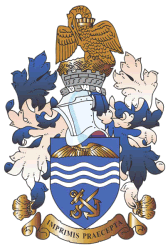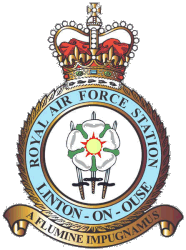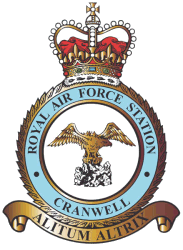

 |
"JET PROVOST HEAVEN" |  |
| JET PROVOST SQUADRONS AND UNITS |
| During 43 years of RAF service the Jet Provost served with several different squadrons on the RAF and indeed Royal Navy pilot training syllabus as well as various RAF Station Flights.
A list of the Jet Provost Squadrons is listed below, in alphabetical order. |
| The Central Flying School (RAF Little Rissington/RAF Cranwell/RAF Leeming/RAF Scampton) JP years: 1957-1991 As you would expect with a training aircraft, the Jet Provost has served significantly with the Central Flying School. It first inherited the type in 1955 when three Jet Provost T.1 aircraft arrived at Little Rissington for Phase A of RAF trials. Combined, they flew a 111 hour programme to evaluate the type as a possible RAF basic trainer, to formulate a possible training syllabus, and to train the first set of RAF instructors. The three aircraft were then transferred to 2FTS for the next stage of the trials, which ultimately went on to be a outstanding success. The CFS then received the seven surviving Mk.1s on November 19th 1957 and kept them until retirement in 1959. The CFS received their first six Jet Provost T.3s on August 31st 1959, and two years later the first two T.4s arrived in November 1961. On September 4th 1969 XW287, the first production Jet Provost T.5, arrived at Little Rissington, and the T.4s were gradually phased
out of service. During April 1976 the CFS moved to RAF Cranwell in Lincolnshire, but it only stayed for 14 months when it moved again to RAF Leeming in Yorkshire. CFS remained at Leeming until 1984 when the station was closed in anticipation of becoming a RAF Tornado base, and they moved to RAF Scampton in Lincolnshire. It was here that the Jet Provost ended its association with the CFS with the type being gradually phased out of service from 1989, the T.3As went first followed by the T.5As. |
 |
|
| |
| 1FTS (RAF Linton on Ouse) JP years: 1960-1992 1FTS has been actively in service close to 50 consecutive years. It received its first Jet Provost T.4, XP615, on 27th April 1962. During the early 1970's 1FTS was one of the very first Units to receive the Jet Provost T.5, and these replaced the near time expired Mk.4s. This variant was withdrawn from the Unit during the early 1980's but continued to use upgraded T.3A and T.5A's until retirement in 1992. The School is currently equipped with the Shorts Tucano but Linton-on-Ouse is guarded by former 1FTS Jet Provost T.3A XN589. |
 |
|
|
| 2FTS (RAF Hullavington/RAF Syerston) JP years: 1955-1969 The first Flying Training School in the Royal Air Force to receive the Jet Provost was 2FTS based at RAF Hullavington. In November 1959 2FTS was selected to be the first Unit to receive the Jet Provost T.3, with the first example arriving June 26th 1959. By
the spring of 1960 the Piston Provosts had been completely replaced. During early 1969 the RAF announced that 2FTS would close due to a reduction in the requirement for new pilots. |
|
|
| 3FTS (RAF Leeming/RAF Cranwell JP years: 1961-1992 After being disbanded at RAF Feltwell in 1958 3FTS was reformed in September 1961 as a Jet Provost T.3 Unit based at RAF Leeming. It served throughoutthe 1960s with T.3 and then later T.4 Jet Provost aircraft before the T.5s arrived in 1970. In September 1984 RAF Leeming was closed and 3FTS was officially wound down. |
|
|
| 6FTS (RAF Acklington, and then at RAF Finningley) JP years: 1961-1968, 1970-1993 6FTS received its first Jet Provost T.3 at RAF Acklington on August 4th 1961, and deliveries of the Mk.4 arrived in 1963. A new Unit formed to train RAF navigators was formed on 1st May 1970 at RAF Finningley, and it took on the 6FTS nameplate. The Unit was one of the last two Squadrons to retire the Jet Provost in 1993. |
|
|
| 7FTS (RAF Church Fenton) JP years: 1962-1966, 1979-1989 Like 3FTS mentioned above 7FTS was reformed to be a Jet Provost squadron. It received its first Mk.3 aircraft in March 1962 at Church
Fenton, and the first course was began in April. During 1963 it received examples of the Mk.4. The Unit was resurrected in 1979, again to operate the Jet Provost and again based at Church Fenton. T.3A and T.5A variants were operated in large numbers throughout the 1980's until retirement in 1989, when it became the first of the JP training schools to upgrade to the Shorts Tucano. |
|
|
| Royal Air Force College (RAF Cranwell) JP years: 1963-1991 The Royal Air Force College at Cranwell was a prominent Jet Provost operator, receiving its first Mk.3 on Match 22nd 1962. A year later Jet Provost T.4s began to arrive, and in 1971 the Mk.5, the latter replacing the Mk.4s on a one to one basis. During the mid-1970's the RAFC began to re-equip their JP fleet with modified T.3As and T.5As, and multiple examples of each variant remained in service until the JP was withdrawn from RAFC service in 1991, giving way to the Shorts Tucano. One of the RAFC's Jet Provost T.5A's was selected to be the new station gate guard after the type's retirement, and it remains on display today. |
 |
|
|
| College of Air Warfare (RAF Manby) JP Years: 1962-1974 Formed in July 1962 from the remnants of the Royal Air Force Flying College, the CAW eventually had a mixed fleet of Jet Provost T.3s and T.4s at their RAF Manby base until it disbanded on 1st April 1974. |
|
|
| School of Refresher Flying (RAF Manby/RAF Leeming/RAF Linton-on-Ouse) JP years: 1964-1993 The School of Refresher Flying was formed in July 1962, as one element of the College of Air Warfare based at RAF Manby. |
|
|
| Central Air Traffic Control School (RAF Shawbury) JP years: 1973-1989 The Central Air Traffic Control School was formed in February 1963 equipped with Piston Provosts and Vampires. It's association with the Jet Provost began in the mid-1970's when the Jet Provost T.4 arrived at RAF Shawbury, and the aircraft was used as live training tools for junior air traffic controllers. The CATCS were the last operators of the JP T.4, retiring their fleet in July 1989 when the School went back to computerised training. |
 |
|
|
| Tactical Weapons Unit (RAF Brawdy) JP years: 1975-1978 The Tactical Weapons Unit was formed at RAF Brawdy in 1974 as a result of 229OCU's disbandment at Chivenor. |
|
|
| No.1 TWU (RAF Brawdy) JP years: 1978-1990 1TWU absorbed the TWU's Jet Provost T.4s and eventually had four T.4 aeroplanes on strength; XP547, XR679, XS178 and XS219. The aircraft were camouflaged and used for the initial training of Army Forward Air Controllers. The Army officers were given air experience in them and the aircraft were used as 'ground attack' aircraft for the controllers' initial exercises. The last example was phased out in 1990. |